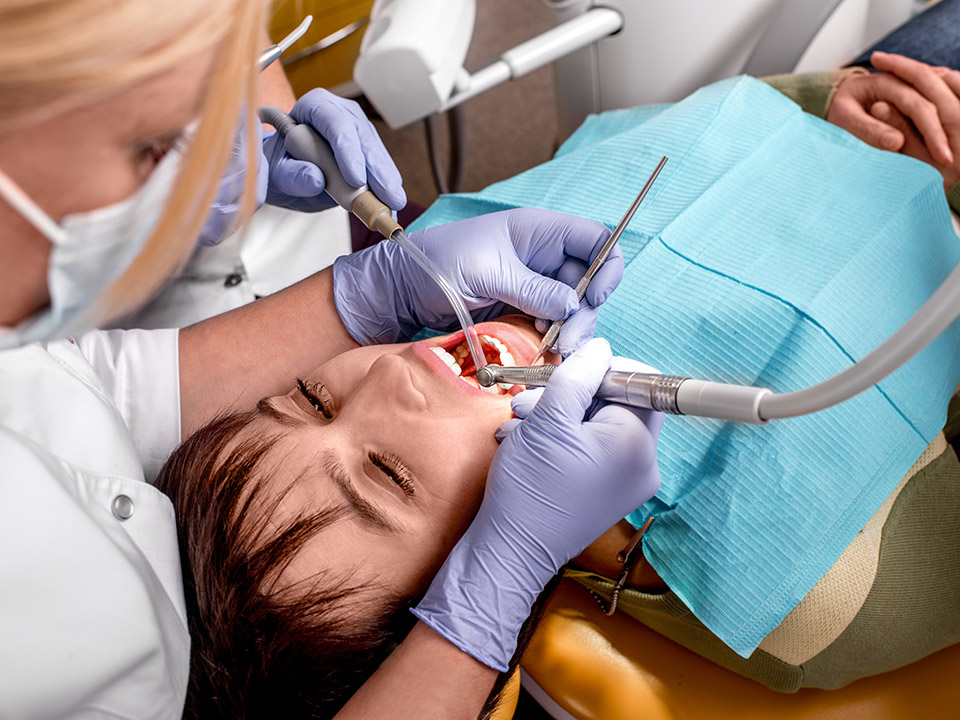Undoubtedly, proper dental hygiene and regular dental visits can increase your teeth’s lifespan. But besides that, you may need dental treatment along the way to guard your oral health and ensure your teeth remain clean and functional for a prolonged period.
Dental sealants are a common preventive treatment usually applied at the onset of tooth decay, possibly during childhood.
If you are on the fence about whether dental sealants are suitable for you or have never heard of them and would like to know more, read on for more insights.
What Are Dental Sealants?
They consist of a thin, plastic coating bonded to the chewing surface of your back teeth: the molars and premolars. The idea is to cover the pits in the tooth (also known as fissures) from acid and bacteria attacks, which may decay the tooth.
Dental sealants act as physical barriers between the vulnerable parts of teeth and destructive bacteria, preventing cavities and adding extra protection.
Why Are They Applied to Molars and Premolars?
Molars and premolars are situated deep inside the mouth, making them difficult to clean. And since they are tightly packed, toothbrushes or floss will hardly penetrate between the teeth and remove food debris. Due to that, these teeth are highly susceptible to bacteria and acid attacks. Bacteria breed on them and ultimately eat through the enamel, causing cavities.
Who Needs Dental Sealants?
Sealants are ideal for anyone with permanent molars and premolars. Both adults and children can enjoy their benefits. However, kids should receive sealants as soon as their permanent back teeth grow fully.
This ensures that the deep pits and grooves usually found on the teeth’ chewing surface are filled in before decay sets in. It also significantly reduces the chances of future cavities or other dental issues.
While sealants are often applied during childhood, adults may have to apply them later in life if they never got the procedure earlier or if pits develop where there were none earlier.
How Are Dental Sealants Applied?
Applying sealant is a quick and pain-free dental procedure. It only takes a few minutes to complete.
First, your dentist will thoroughly clean and dry your mouth. The process ensures your teeth are clean and that no food debris or bacteria sticks between your teeth. It also reduces the risk of developing infections. Little cotton or other absorbent material is applied around the tooth to keep it dry.
Once the tooth completely dries, the liquid sealant is applied to it and left to dry until it hardens to build a strong binding between the sealant and your tooth.
When the sealant completely hardens, it transforms into a hard plastic varnish coating, after which you can continue chewing with the tooth normally. Sometimes, your dentist may use a special blue light to hasten the hardening process.
Is There Any Aftercare for Sealants?
One of the perks of applying sealants is that they do not require special care or treatment after placing them on your teeth. All you need to do is practice proper dental hygiene to keep them in good condition. This entails using mouthwash at least twice daily, flossing, and brushing.
You will also have to visit your dentist at least once every six months to check for imperfections or flaws. However, if your sealants become cracked or chipped, you will not necessarily have to repeat the entire process.
Your dentist can reapply the sealant only to the affected tooth immediately. Besides this, there are no significant changes that you will need to adjust to.
How Long Do Sealants Last?
Sealants have had a successful track record since the 1970s and have continually improved over the years thanks to advanced technology and research. Nowadays, you can expect your sealant to serve you with maximum effectiveness for a minimum period of 10 years before reapplying.
You will, however, need to maintain routine check-ups with your dentist so they can check for wear and chips, and also remember to use fluoride toothpaste and mouthwashes to protect your teeth surfaces from cavities or decay.
Are There Any Potential Side Effects?
Given that sealants are made of plastics containing a small amount of bisphenol A (BPA), some presume it can cause health problems in infants and children. However, that is not the case. According to the American Dental Association (ADA) reports, there is no evidence linking BPA in dental sealants to adverse health effects.
The only possible side effect of a dental sealant is an allergic reaction. The good news is reactions are rare. As usual, inform your dentist of any allergies you may have for them to ascertain whether or not you need sealants.
What If My Sealants Don’t Feel Right?
Since your bottom and top teeth often fit comfortably without an alignment issue, any foreign element between teeth may initially feel uncomfortable. If you experience such during your first days, know that it is normal and only takes a few days to adapt.
In case of a slight oddity in the manner that your sealant feels after a bite, give it one or two weeks, after which it should disappear on its own.
Dental sealants are shaped and positioned to outfit the distinctions of your precise bite during grinding and chewing. But if your sealants feel painful or uncomfortable at any moment, make sure to alert your dentist for proper adjustments.







